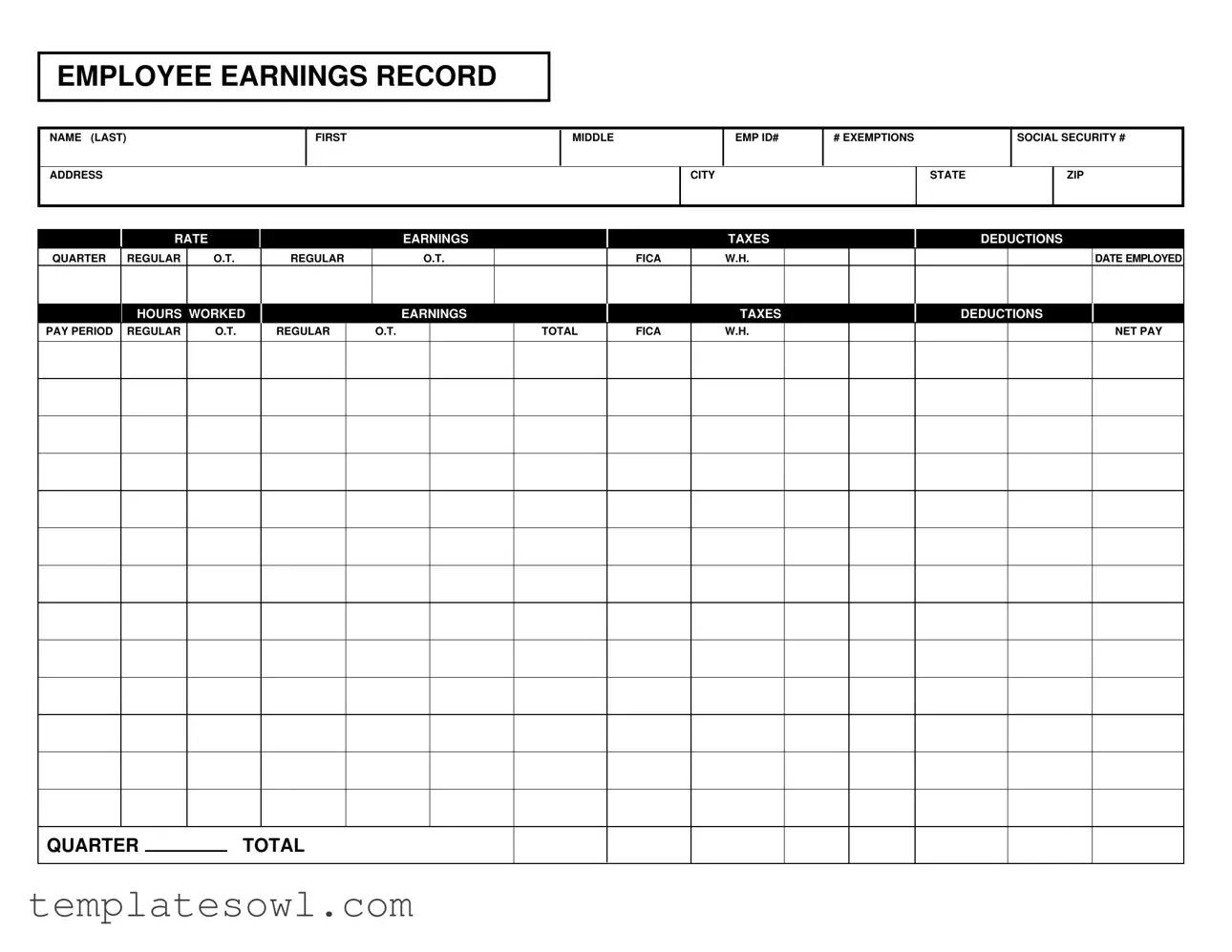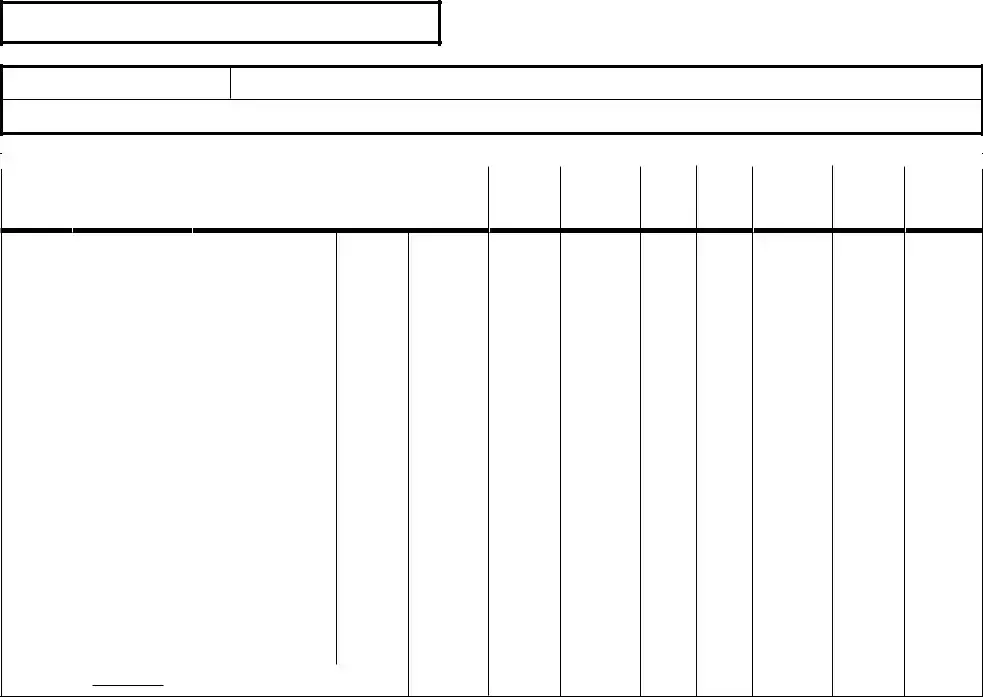What is the Employee Earnings Record form?
The Employee Earnings Record form is a document used by employers to keep track of an employee's earnings, taxes, deductions, and other important financial information. It serves as a record of how much an employee has earned during a specific pay period, including regular and overtime hours.
Why is the Employee Earnings Record important?
This form is crucial for both employers and employees. For employers, it ensures compliance with tax regulations and assists in reporting earnings accurately. Employees can use this record to verify their payments, track their earnings over time, and view the deductions taken from their paychecks.
What information is included in the Employee Earnings Record?
The form includes various pieces of important information: the employee's name, address, employee ID number, total earnings, categorization of earnings (regular and overtime), tax information, deductions, and net pay. It also lists the pay periods and hours worked.
Who is responsible for maintaining the Employee Earnings Record?
Employers are primarily responsible for maintaining accurate records. However, employees should regularly check their earnings records for accuracy to ensure they are receiving the correct payments and deductions. An open line of communication regarding this record can help prevent issues.
How often should the Employee Earnings Record be updated?
The Employee Earnings Record should be updated with each pay period. This regular updating allows for real-time tracking of earnings and deductions, which is essential for tax purposes and personal financial management.
What are the key components listed on this form?
Key components of the form include the employee's name, pay rate, hours worked (both regular and overtime), earnings summary, tax withheld, deductions, and net pay. Each section is vital for understanding the employee's overall compensation package.
How does overtime pay work in the Employee Earnings Record?
Overtime pay is recorded separately on the form. It’s typically calculated at a higher rate than regular hours, and employers must ensure that the correct amount is reflected in the earnings section. Accurate recording is essential for compliance with labor laws.
What should I do if I notice an error on the Employee Earnings Record?
If you spot an error on your Employee Earnings Record, promptly notify your employer or the HR department. Discussing it as soon as possible can help resolve the issue quickly and ensure that any necessary corrections are made in a timely manner.
Is the Employee Earnings Record used for tax purposes?
Yes, the Employee Earnings Record plays a significant role in preparing for tax filings. It provides a detailed summary of your earnings and withheld taxes, which you will need when filing your annual tax returns. Always keep a copy for your records.

